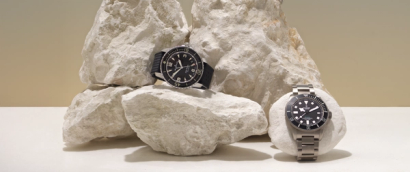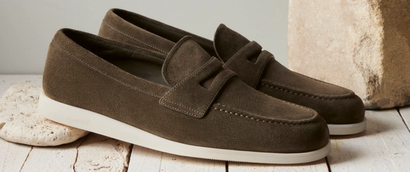

Words: Gentleman's Journal
“Deciding to buy a vintage watch is one of the greatest feelings in the world”, says David Duggan, a luxury watch broker. “Although I would say that. My team at David Duggan Watches has more than 150 years’ combined experience in this business, and like any luxury watch dealer worth his or her salt, this isn’t just a job, it’s a vocation.”
We are sitting with David to discuss the steps of investing in a vintage watch – something that is becoming increasingly popular. For the uninitiated, it can be something of a minefield, and there are plenty of important questions that need to be asked to ensure the right decision is made. We put these to David – here are a few things you should consider when buying a vintage watch.
What do you mean by vintage?
Generally speaking, a vintage watch is anything that was made pre-1960s.
Why does one want to buy a vintage watch?
Ask yourself this before anything else. Why do you want one and what do you want to do with it? A vintage timepiece should become an old friend, something to be worn on special occasions. It’s not a day-to-day, bash-about watch, nor should you be so worried about its value that it sits locked away in the safe all the time. The important thing is to not romanticise it. Too much. You may fall head over heels for its style, but consider what you want to use it for.
Often, a vintage watch can look very similar to a modern watch, but, for example, many of the real classics have no waterproofing whatsoever. I don’t just mean you can’t scuba dive with it, I mean that if you get caught in a thunderstorm you won’t be worried about your jacket, brolly or anything else. You’ll be running along, getting soaking wet while trying to keep the rainwater out of your timepiece. So, first of all, ask yourself if vintage is truly for you.
How does one know what he/she wants?
The luxury watch market is a big place, with endless possibilities to suit all tastes and budgets. There is a passionate community of knowledgeable collectors and some fantastic online resources to help you learn and buy that treasured timepiece. But, it’s easy to be overwhelmed by all the choice, so ask yourself what’s important to you: is it budget? How the timepiece looks? What its value will be in 10 years’ time? Or do you hanker after the most unusual complication? By understanding what drives you, you can begin to narrow down your choices.
What advice do you give to the first-time buyer?
1. Don’t overdo it
If this is your first foray into the vintage market, my advice is don’t go too vintage or too quirky. Aim for something classic – perhaps a 1950s or 60s piece. If you go for something too unusual at this stage and later decide you want to sell it on, what might have appealed to you may not to others. Or its value may have dropped. This can be a fickle market.
2. Ask questions. Lots of questions
The most important question is: who are you buying this from? The great thing is that there is lots of choice. But that has also led to a lot of fakes. I always say if the price looks too good to be true, it probably isn’t true. So, make sure you get to see the watch – either through verified pictures or by visiting a dealer. You don’t have to be an expert to be able to have a basic understanding of a watch’s condition. You’ll be able to see it. Talk to other collectors, or get online and join one of the growing number of forums. Equally, a reputable dealer will never mind answering questions about the watch in question or the market generally. If they’re avoiding your questions or seem impatient to get rid of you, steer clear.
After that, I would ask what does the watch come with: does it have its box and papers? Has it been serviced? What sort of guarantee does it have – most pre-owned luxury watch dealers offer a minimum of one year’s guarantee, so look for this and be extremely wary if the guarantee is less than 12 months or if they are refusing to guarantee the watch at all.
3. Know your market
If you want your watch to not only look good but also hold its value, then careful choices must be made. Brands including Patek Philippe, Rolex and newer Cartier models tend to hold their value well, others less so. As a consequence, the vintage market is a slow one – we always refer to our vintage timepieces as old friends because they can take up to 6 years to sell. Like the vintage car market, prices can rise and dip, sometimes dramatically, so if it’s profit you want, then be sure to research your brand and perhaps even consider a modern watch instead. For instance, a 25-year-old Patek Phillipe Calatrava bought today is guaranteed to earn a profit in 5 years’ time.
4. Protect your investment
Once you’ve bought your perfect timepiece, make sure you always keep the box and all the documentation that it comes with safe and dry. This will have an effect on your watch’s value. Get it serviced at the appointed intervals – most manufacturers recommend 3 to 4 years, although we believe you can let a watch run up to 5. If you can start to build a service history, particularly with someone reputable, then all the better. At David Duggan Watches, any work carried out will be documented with a receipt that contains a description of the watch, repair details and a year’s guarantee on that work. And above all, make sure you take out good insurance. You can either add it to your household insurance or Hiscox and TH March both provide bespoke insurance services for the vintage market.
The David Duggan luxury watches team has more than 150 years’ combined experience in the luxury watch market, they are members of the British Horological Institute, globally trusted and admired vintage watch specialists of London’s Burlington Arcade.


